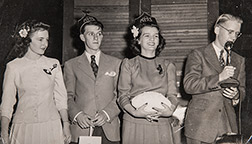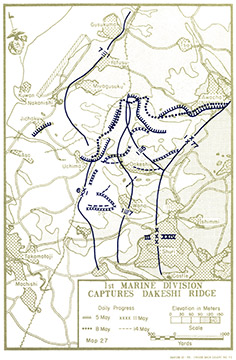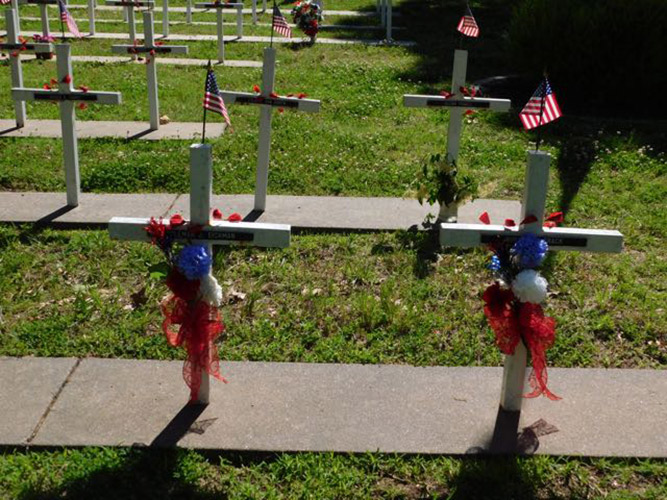Robert Srack and Colman Eichman
Robert “Bob” Srack was in the prime of his life when he decided to enter his nation’s service. Bob was the co-captain and star quarterback for Manhattan High School’s famed 1943 football team – the first in school history to achieve a perfect season. In 1944 Bob was named King of the “Pig Skin Prom” and served as an editor for Manhattan High’s Blue M yearbook.
As their high school years came to a close, however, Bob and many of his classmates came of age for military service. Patriotism ran high in Manhattan’s senior class and, rather than wait to be drafted, Bob was among ten students who went off to Leavenworth to enlist.
Most of the boys wanted to join the Navy but one of the ten held out. Colman Eichman wanted to be a Marine. Unfortunately for the others, the recruiter refused to allow only one of the group to join the Marines – he insisted that Colman be joined by one of his friends. With none of the others jumping at the chance to join the rough-and-tumble Marine Corps, the Manhattan boys were forced to draw straws. In the end it was Bob who lost the drawing, and, true to their agreement, he signed up with Colman for the Marines.
Not long later Bob and Colman left for the Marine Corps’ basic training in San Diego California. After a hard six weeks of training the two newly-minted Marines returned home one last time to Manhattan before being shipped off to war.
In the spring of 1945 Bob and Colman found themselves on the Pacific Island of Okinawa, part of the Marine Corps’ island-hopping campaign to get closer and closer to Japan. It was the waning days of the war and the Japanese defenders were becoming desperate. American soldiers and Marines on Okinawa faced some of the harshest fighting the American military has ever faced.
Ultimately, the U.S. military suffered approximately 80,000 killed, wounded, and missing during the Okinawa campaign. Tragically, Manhattan’s Bob Srack and Colman Eichman both died in battle on the same day – May 11, 1945.
After the battle Bob and Colman were interred together with their comrades on Okinawa. In 1949, however their bodies were retrieved and brought back to the United States. They now rest in the National Memorial Cemetery in Honolulu, Hawaii.





